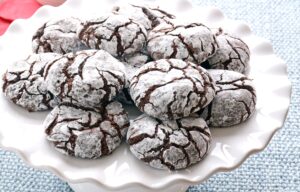



Food scientists don’t know the exact time in history sourdough leavening was started, but it goes way back! Some say that airborne yeast got on some flour and water mixture that was just the right temperature and Ph level to make a home. It fell in love with the beautiful environment and stayed. It might surprise you to know that natural yeast is everywhere. Wild yeast can be found on grains, and when the flour is freshly milled, it is also there in the flour in microscopic amounts. This yeast on grain is the primary source of natural yeast for sourdough, even though airborne yeast is also “at play” in some smaller amounts.
Our Pastry Chef prefers sourdough starters made without commercial yeast, just the air’s spores and the natural yeasts present in flour and grain. It is a long process to make the sourdough starter and bread, but the flavor is gorgeous. The longer the sourdough starter has been fed, used, and kept, the more complex the flavor profile of your loaves of bread will become. Airborne Yeast is different everywhere, too, so our Texas sourdough will never be San Francisco sourdough. Why? Because airborne yeast is different here. Not bad, just different. Our chef’s starter has been around our test kitchen for over 15 years, but some sourdough starters are available for purchase online that have been around for over 200 years.

Sourdough starter can be kept in the fridge and fed once a week, or if you make sourdough daily, it needs to be held at room temperature and provided food daily. Large artisan bakeries make this sourdough starter several gallons at a time! It is not unusual for some shops to make this base sourdough starter for hundreds of loaves a day. We will be adding our Commercial Bakery Formulation for large volume production in a follow-up post very soon.
3 ¼ cups (1 lb) Panhandle Milling Organic All-Purpose Flour
2 cups (1 lb) non-chlorinated water (artisan or filtered water works best)
Combine the Panhandle Milling organic all-purpose flour and water in a half-gallon non-metal container and let stand uncovered (or covered with cheesecloth to keep bugs away) and out of a draft for several days until it bubbles (ours took about a week).
1 ½ cup (8 oz.) Panhandle Milling Organic All-Purpose Flour
1 cup (8 oz.) filtered water
1-2 Tbsps. Sourdough Starter
In a 1-quart glass or plastic container, stir with a non-metal spoon until there are no dry spots of flour. Cover with a lid and return the mixture to the fridge. Allow the mixture to come to room temperature before using. When making bread, retain 1-2 Tbsps. of the starter to keep alive in the refrigerator for your next baking project and feed using the feeding directions.
6 cups Panhandle Milling Organic All-Purpose Flour
2 cups lukewarm filtered water
1 tsp. salt
1 cup sourdough starter